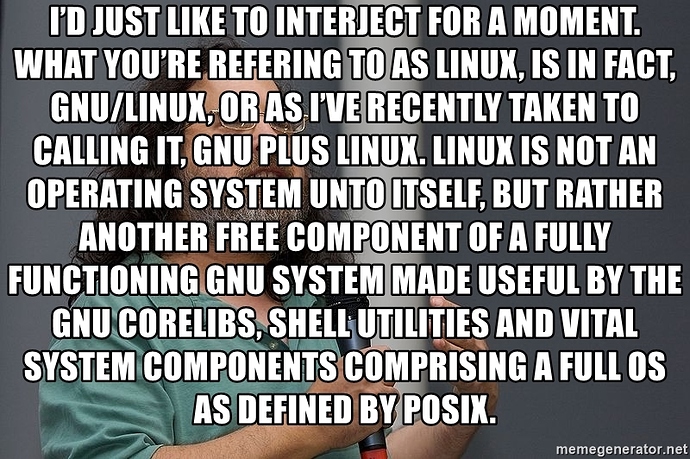Yeah but the commands that Pamac issues are really only relevant to controlling package management. By that I mean the commands that a user intends. For sure it is “contacting” other things eg when it checks for updates and a whole host of other things, so logically you are correct. 
Pamac started out as a gui for pacman, but for many years now it hasn’t used pacman at all. Instead, pamac uses directly the same software library that pacman uses. It has also gained a command line interface of its own, pamac-cli.
Ah I see! Thanks for the information, my knowledge of Pamac was clearly outdated. I’ll have to look into pamac-cli and learn about that and how it relates and compares to Pacman. Obviously Pacman is the “Arch way” but Pamac is in the AUR (pamac-aur). I always do package stuff in a terminal but I use Pamac as a very handy “look-up” tool regarding general info, dependencies etc. I’ve got it installed on my Arch machine too 

Just been checking on a few things about Pacman etc. It’s libalpm that Pamac and Pacman access, not alpm, that stands for Aggressive Link Power Management which is to do with HDDs and SSDs.
Sorry to be pedantic, but that had me confused until @Chrysostomus enlightened me further. I stand corrected by you both! 
The package name of the ALPM library is indeed libalpm.
However, alpm = Arch Linux Package Management
The main feature of pamac is the beginner friendliness. For example, it has more verbose commands and it tries to prevent partial updates by running an update when you install something. It also has some automatic handling for common errors.
But it has some more advanced features too. For example, it predownloads updates in the background, runs simultaneous downloads, manages pkgcache and has the option to not compress packages when building from AUR (fast installation for big packages if you don’t need to keep cache) and support for snap and flatpak. On the command line I mostly use pacman because of the familiarity, but pamac has also really grown as its own tool and has some pretty appealing use cases.
ALPM as “Arch Linux Package Management”.
libalpm is a library that contains functions used to do package management on Arch-based systems. Pamac uses libalpm without using pacman in itself.
https://www.archlinux.org/pacman/libalpm.3.html
Take Pacman away, and Pamac would not do anything!
You can delete /usr/bin/pacman, it won’t affect Pamac at all. Pamac can work without /usr/bin/pacman.
If you delete libalpm however, now the result will be more grim.
Regarding that post you saw: It is not possible to replace Pacman with Pamac
Actually, it is possible, but you have to split pacman and libalpm (and makepkg, since Pamac still relies on makepkg to build packages, but the built package will be installed with its own routine, without calling pacman).
Yep, exploring pamac’s other CLI features should be fun. I always enjoy finding new things.
Yeah, got that earlier thanks! See earlier parts of thread. I’m up to date now 
Dogmatic questions aside, and I’m sure that I’m only parroting what some people on this thread might have said already, I guess Manjaro is what you want it to be at the end of the day. Same with utilizing the GUI or Terminal. You takes your picks and risks as you see fit.
I’ve never been particularly Terminal-centric since the very first day, although I used it from time to time in the past, but as I’ve become more and more familiar with this distro over the past 3 years I feel at ease with the GUI on KDE Plasma. So, I constantly use it. After all, it’s there to be used at the end of the day…
Of course, all important stuff has been backed up, and if things go badly, re-installing Manjaro isn’t an issue. It’s easy. That’s it. Oh, and reading the Wiki and watching posts /comments on the Forum should be mandatory if you wish to avoid headaches. But that again is just an opinion(or just some advice, if you prefer)…! 
(this is partially a self-flogging for my flippant earlier post, but may also be somewhat illustrative…)
Then you have your windowing systems, window managers, desktop environments, and distributions and on and on.
I run servers on your hated ‘gui-centric’ ubuntu … and have never seen a GUI.
Many corporations do the same.
…I think you may need to … rethink a moment.
This topic was automatically closed 15 days after the last reply. New replies are no longer allowed.
